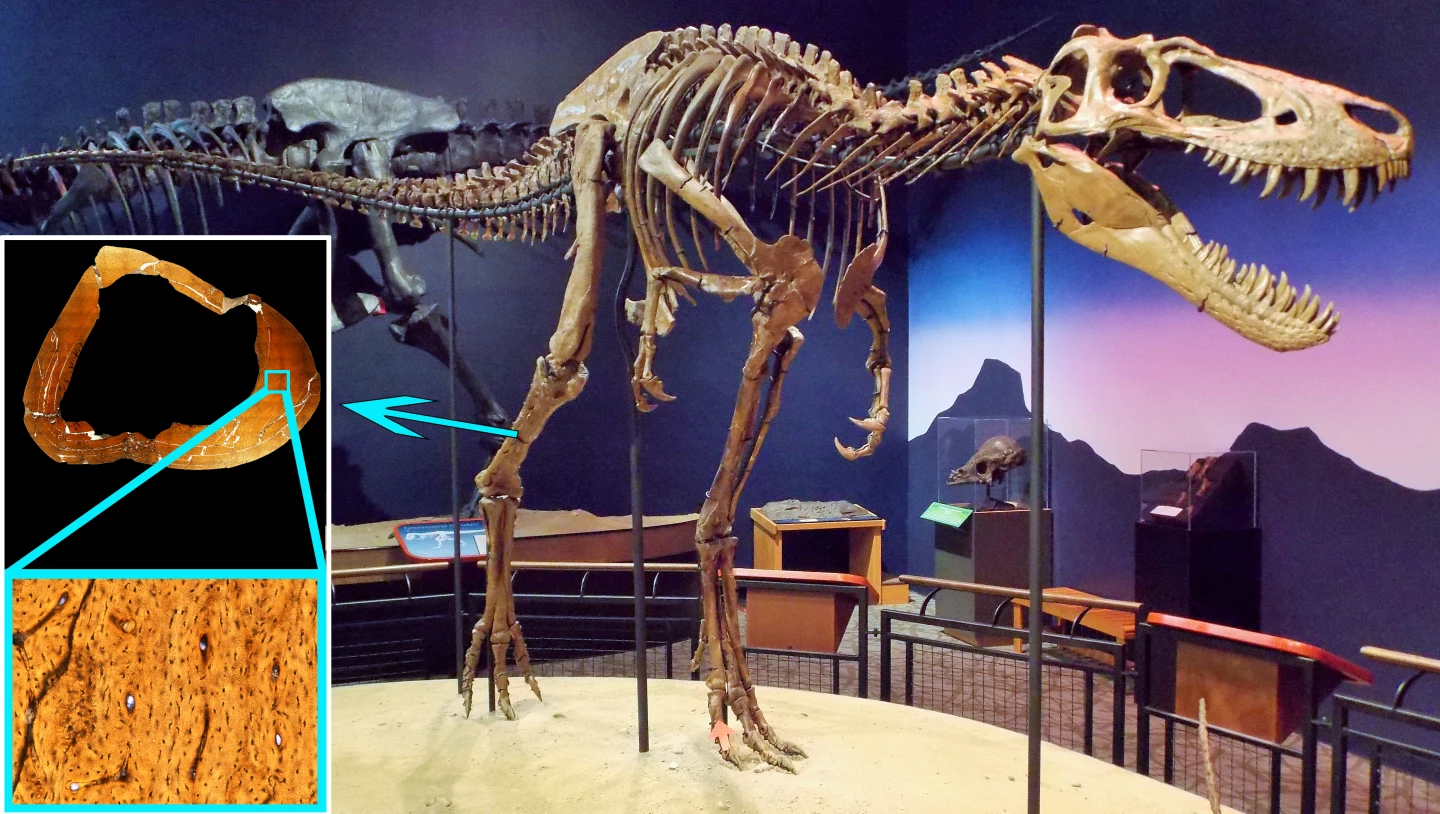Wouldn't it be neat if there had been a pint-size Tyrannosaurus? Well, sorry, but apparently there wasn't. According to new research, skeletons that were thought to belong to a pygmy relative are actually from teenage T. Rexes. They're still pretty interesting, though.
The two skeletons were initially unearthed in Montana in the early 2000s, by paleontologists from the Illinois-based Burpee Museum of Natural History. Each creature was approximately twice as long as a present-day draft horse, and slightly taller. This is a far cry from the well-known Tyrannosaurus Rex, which got up to 40 feet long (12 m) and 20 feet tall (6 m).
Nicknamed Jane and Petey, the two dinosaurs were believed by some to possibly represent a miniature Tyrannosaurus genus, dubbed Nanotyrannus. Scientists created the classification back in 1988, when they assigned it to the skull of a small Tyrannosaur that is now on display in the Cleveland Museum of Natural History.
Recently, however, a consortium of American researchers took a fresh look at the Montana remains.

By studying the microstructure and proportions of the bones – and comparing them to those of existing animals such as birds – it was determined that the reptiles had still been growing. In other words, they had yet to reach their full size.
That finding was backed up when the researchers counted the annual growth rings inside the dinosaurs' leg bones, which showed that Jane and Petey were 13 and 15 years old (respectively) at their time of death. This puts each of them as being just about the right size and age for an adolescent Tyrannosaurus Rex, as T. Rex lived to be about 30 and reached adult size at around 20.
The team has therefore concluded that neither Jane nor Petey was a Nanotyrannus, nor was the dinosaur to which the Cleveland skull belonged – the genus simply never existed.

This doesn't mean that their skeletons have nothing new to tell us, however. For one thing, the juveniles appear to have been much faster and more "fleet-footed" than adults, plus they had sharper teeth that were better suited to cutting than the bone-crushing teeth of grown-ups. As a result, they may have occupied an entirely different ecological niche.
Additionally, the varying distance between the growth rings in their bones (which were not unlike the rings in a tree trunk) lend credence to the notion that T. Rex grew more in years when food was plentiful, and less in years when it wasn't.
"The spacing between annual growth rings record how much an individual grows from one year to the next," says the lead scientist, Dr. Holly Woodward Ballard of the Oklahoma State University Center for Health Sciences. "The spacing between the rings within Jane, Petey, and even older individuals is inconsistent – some years the spacing is close together, and other years it's spread apart."
A paper on the research (which also involved scientists from Chapman University, Montana State University, the Museum of the Rockies, and the North Carolina Museum of Natural Sciences) was recently published in the journal Science Advances.
Sources: Oklahoma State University Center for Health Sciences via EurekAlert, American Association for the Advancement of Science via EurekAlert






